
Guests
- Marco Saavedraundocumented activist who infiltrated the Broward Transitional Center in Florida on July 11 and was released on Friday, only to be arrested again over the weekend calling for the release of other immigrants in detention. He came to the United States from Mexico with his family when he was three years old in 1993 and grew up in New York City.
- Thomas Sheadirector of training and technical assistance at the New York Immigration Coalition.
Links
- DREAM Activist
- National Immigrant Youth Alliance
- New York Immigration Coalition
- NYIC: August 15th Deferred Action Orientation for DREAMers
- “DREAM Activist Speaks Out on Infiltrating Florida Detention Center to Find Wrongly Held Immigrants.” (Democracy Now!)
- NYIC Trainings
- Watch additional Democracy Now! reports about immigration issues in the United States
A new Obama administration policy could stop the deportation of as many as 1.3 million undocumented immigrants who were brought to the United States as children. Starting on Aug. 15, students under the age of 30 may be eligible for a two-year reprieve from deportation if they meet certain conditions. We speak to Marco Saavedra, a DREAM activist who infiltrated a Florida detention facility and was arrested again over the weekend calling for the release of immigrants held there. We also speak with Tom Shea, director of training for the New York Immigration Coalition, about the Obama administration’s new Deferred Action for Childhood Arrivals program and what it will mean for undocumented youth. [includes rush transcript]
Transcript
NERMEEN SHAIKH: We begin today with a look at a new policy that could stop the deportation of as many as 1.3 million undocumented immigrants who were brought to the United States as children. People can start to apply for the new status starting next Wednesday, August 15th. President Obama first announced the so-called Deferred Action for Childhood Arrivals program back in June.
PRESIDENT BARACK OBAMA: These are young people who study in our schools. They play in our neighborhoods. They’re friends with our kids. They pledge allegiance to our flag. They are Americans in their heart, in their minds, in every single way but one—on paper. Now, let’s be clear. This is not amnesty. This is not immunity. This is not a path to citizenship. It’s not a permanent fix. This is a temporary, stopgap measure.
NERMEEN SHAIKH: Under the new policy, students aged 30 or younger who are enrolled in school on the day they apply will now be eligible for a two-year reprieve from deportation if they demonstrate that they came to the U.S. before their 16th birthday, lived here for the past five years and have not been convicted of certain crimes and do not pose a national security threat. On Tuesday, the U.S. Citizenship and Immigration Services director met with advocates to answer questions about who will be eligible and how they can apply.
Meanwhile, advocates say many people who qualify for the new policy are still being deported. Last week, Democracy Now! spoke with a 26-year-old undocumented immigrant named Viridiana Martinez, who infiltrated the Broward Transitional Center in Florida and found dozens of immigrants who she said should be released. She was speaking from inside the detention center.
VIRIDIANA MARTINEZ: I have found several DREAM Act-eligible girls here. One was being held here for three months. She was just recently, last Thursday, released, I believe. And there was another one who was also released last week. But the damage is already done, you know? Although they are released, the damage is already done, because they have been—you know, they have been detained in this place. And I think that’s what needs to be highlighted. And even though the president and the administration is saying that they are not, you know, detaining or deporting DREAM Act-eligible youth, and here I am.
AMY GOODMAN: On Friday, Viridiana and her fellow activist, Marco Saavedra, were released from detention, only to be arrested again over the weekend during a protest calling for the release of other low-priority detainees inside the Broward deportation or detention center.
Well, Marco Saavedra joins us now here in New York City. He just returned to the city where he grew up after immigrating to the United States with his family when he was three years old in 1993.
Welcome to Democracy Now!, Marco.
MARCO SAAVEDRA: Thank you.
AMY GOODMAN: Talk about your experience inside, why you chose to get deported to get inside Broward.
MARCO SAAVEDRA: Correct. So, once again, my name is Marco, and I’m a DREAM Act-eligible student. So, knowing that the privilege and the comfortability that that status or that semi-status affords me, we knew that we could somewhat comfortably go into the center, infiltrate it, collect stories, develop campaigns with them, and then, once going public with our status and going public—me and Viridiana going public with the fact that we had done so, we knew that we had a way of our—to release, and we basically were asked to leave, if not expelled, from the center. So, in brief, that’s kind of what we did.
AMY GOODMAN: And tell us what you found inside. Who did you find?
MARCO SAAVEDRA: What we found and what we’ve developed since we started this campaign—and I was in the center for about 23 days—was many, many detainees who, as you said, qualify as low priority for deportation, including the case of an Claudio Rojas, who is an Argentinean father, and he is now on his 17th day of his hunger strike, because—as an expression of his faith, but also as a statement saying that the worst has already happened to me, being separated from my family for the past six months, and using his body as a sacrifice or as an example of the sacrifice that he’s already endured, he’s willing to do that and, because of that, was separated from—and was taken from Broward Transitional Center to Krome detention facility in order to be removed from the other detainees that were also beginning to organize as he had begun.
AMY GOODMAN: But what was his story? Why—is he one of the people who would be released under Obama’s program?
MARCO SAAVEDRA: Under the prosecutorial discretion memo, correct, as outlined in the summer of 2011, he would be a perfect candidate. He was in removal proceedings about two years ago, when he was detained with his son after a kind of a traffic—a minor traffic infraction. They were trying to enter a port, and they didn’t have valid identification, and so they were both in detention for three months. And his son is DREAM Act-eligible, Emiliano Rojas, and so his case was dropped. But Claudio received 120 days to leave the country and disobeyed it, because he would rather choose to stay with his family and provide for them. And so, receiving a deportation order and not obeying it, now that’s the biggest thing that is really hurting his campaign for his release.
NERMEEN SHAIKH: There was a petition that was submitted on his behalf, is that correct?
MARCO SAAVEDRA: Correct. Already, on the legal side of things, we’ve already filed about—or his attorney, rather, has filed already, I believe, two stays of removal to reopen his case, because with a deportation order he doesn’t have the right to see a judge in order to maybe re-adjudicate his case. But there’s also an online activist petition at dreamactivist.org, if folks want to sign on. And that is not only for Claudio but really all the detainees. And we found about 30 live petitions of individual stories with their families, of folks that would qualify as low priority. And we’re really calling on the revision of all 600 cases, because we know that the number is really high due to the fact that this is a low-security detention center.
NERMEEN SHAIKH: Can you say a little about how you actually managed to infiltrate the facility? What did you have to do in order to get in?
MARCO SAAVEDRA: Correct. So, ironically enough, it was rather difficult. I know we first went to the port where Claudio and Emiliano were detained about two years ago, and afterwards we went to Fort Lauderdale airport and tried to talk to Border Patrol there, kind of with the pretense of looking for a friend or wanting to turn myself in and kind of being—and being very blatant about being undocumented, being here without papers. And then, on the third attempt, we went to a Border Patrol station, again under the pretense of looking for a friend, where I confessed that I was also undocumented, that I had come with my alleged cousin through the border. And so, upon that realization, the agent apprehended me, which was, I guess, in a word, the bait in order to enter the center.
AMY GOODMAN: How many young people did you find at the Broward detention facility who you believe would be eligible under the new Obama laws?
MARCO SAAVEDRA: Under the new Obama—
AMY GOODMAN: Rule.
MARCO SAAVEDRA: —rule for DREAM Act-eligible youth, specifically, there’s five that I know of. And I guess the most blatant case is the one of Pablicio Machado. I guess the most outstanding thing on his case is that he was deported in February for driving without a license from Boston and then tried to re-enter through the Bahamas. And upon re-entry, he actually pressed charges on his trafficker for human trafficking. And he is also ineligible for a visa on that—on those grounds but has been—
AMY GOODMAN: What do you mean?
MARCO SAAVEDRA: When one assists in closing out a case—one, as an undocumented immigrant, assists the U.S. government in closing out a criminal proceedings case, and he has the paperwork to demonstrate that, that he and a fellow passenger [inaudible] both testified against their human trafficker, against the man that was captaining the boat trying to enter to Florida via the Bahamas. One is an [inaudible], and the prosecution of that case then is eligible for, I guess, several types of visa. I don’t know specifically the one for human trafficking.
NERMEEN SHAIKH: How many people are there in total in the facility?
MARCO SAAVEDRA: About 600 detainees. And as we were saying, due to the fact that it’s a low-security detention center, a lot of them are there with little to none criminal record. So a lot of them were caught either driving without a license or as passengers at a checkpoint or maybe fishing without a license or at work or at a corner at Home Depot, or there were instances of men with going to church, because I was obviously only interacting with the men, and stopped just on street corners or for minimal infractions, minimal misdemeanors such as DUIs or open containers. And obviously those are the more harder cases, but definitely the ones without any criminal histories are very favorable for discretion.
AMY GOODMAN: Marco, how sure were you that you wouldn’t be deported yourself? And when—what did they do when they figured out what you were doing in the jail?
MARCO SAAVEDRA: Correct. So, we never filed any paperwork or never had attorney representation while we were in detention. And we—I guess, the history of civil disobedience, particular to the National Immigrant Youth Alliance, demonstrates that with public actions, due to the publicity and public nature of them, none of the now over hundred participants, not just DREAM Act students but also parents, have ever been put into removal proceeding. So that’s why the process of creating silent actions, kind of going undercover, developed, because publicly we could never access a detention center after being apprehended by the police, kind of like what happened this past weekend. And so, without, again, filing any legal claims or talking to our deportation officers, we were asked to leave, I think, as soon as national media started to pick up on that story, with Democracy Now! and Univision interviewing us. And so, again, we were just given a paper that said that we might be eligible for the recent Obama announcements for young immigrants, and asked to leave.
AMY GOODMAN: We’re going to talk about that announcement in a minute. We’re joined by Marco Saavedra, undocumented activist who infiltrated the Broward Transitional Center in Florida July 11th, was released Friday, only to be arrested again over the weekend, calling for the release of other immigrants in detention. He came to the U.S. from Mexico with his family when he was three years old. We’ll be joined by Marco again, as well as an attorney, talking about what the process is, now that these Obama rules have been laid out, for young immigrants to seek a stay of deportation or not to be—go through the process at all. Stay with us.
[break]
AMY GOODMAN: Our guests are Marco Saavedra, who is a young activist, DREAM activist, who was detained this weekend and used his presence in the Broward Transitional Center, the reason he got arrested, to investigate whether other people in the jail should be released. We’re also joined by Tom Shea. Tom Shea is director of training and technical assistance at New York Immigration Coalition. We’ve just heard Marco’s story. And, Tom, if you can talk about what is happening on August 15th?
THOMAS SHEA: On August 15th, the people who arrived in the United States as children would be able to come forward and apply for deferred action. The formal name of the program is called Deferred Action for Childhood Arrivals. And the application form is not out yet. The USCIS, the United States Citizenship and Immigration Services, has said that they would post it to their website by August 15th. So we don’t—we haven’t seen the form yet. We don’t know what the application will look like. But in order to apply for Deferred Action for Childhood Arrivals, the person must have arrived in the United States before their 16th birthday. They had to have been continuously residing in the United States since June 15th, 2007, through the present. They had to have either entered the United States without inspection, like crossing the border illegally, or, if they entered legally, they have to have been in unlawful status as of June 15th, 2012. They have to show that they were physically present in the United States on June 15th, 2012, up through the time that they submit their request for deferred action.
NERMEEN SHAIKH: So, what should people know about this? And how different it is from what the DREAM Act is—I mean, what the—legally?
THOMAS SHEA: Legally, so, Deferred Action for Childhood Arrivals is not a pathway to legalization, a pathway to the green card or a pathway to citizenship, unlike the DREAM Act. If Congress had passed the DREAM Act, it would be a pathway to people getting their green card. And Deferred Action for Childhood of Arrivals is just really a determination by the immigration authorities that we’re not going to deport you. You are—we could deport you from the United States, but we are not going to start deportation proceedings against you, or if you’re in deportation proceedings, we’re not—we’re going to stop the deportation proceedings against you, or if you have a—
AMY GOODMAN: For how long?
THOMAS SHEA: For two years. And during that two-year period, you could get a work permit.
AMY GOODMAN: I want to play a part of President Obama’s comments from June 15th when he announced the deferred action plan for certain young immigrants and called on Congress to take further action.
PRESIDENT BARACK OBAMA: There’s still time for Congress to pass the DREAM Act this year, because these kids deserve to plan their lives in more than two-year increments. And we still need to pass comprehensive immigration reform that addresses our 21st century economic and security needs, reform that gives our farmers and ranchers certainty about the workers that they’ll have, reform that gives our science and technology sectors certainty that the young people who come here to earn their PhDs won’t be forced to leave and start new businesses in other countries, reform that continues to improve our border security and lives up to our heritage as a nation of laws and a nation of immigrants. Just six years ago, the unlikely trio of John McCain, Ted Kennedy and President Bush came together to champion this kind of reform. And I was proud to join 23 Republicans in voting for it. So there’s no reason that we can’t come together and get this done.
AMY GOODMAN: That’s President Obama announcing the new rule. Marco Saavedra, you graduated from Kenyon this year. You also attended Georgetown. President Obama is encouraging Congress to pass the DREAM Act. What are you doing about getting the DREAM Act passed?
MARCO SAAVEDRA: Correct. So, again, I guess our—speaking as a member of the National Immigrant Youth Alliance, which is really a collection of grassroots efforts around the country, grassroots groups, that are largely student- and ally-led, our efforts have always been, obviously to be politically involved, but primarily coming from our base being our communities. So we start abvocating and organizing our communities. Then we can have the accountability necessary to hold our politicians to their promises. And so, instead of waiting for their time lines, we’re hoping to always advance the agenda.
And I guess, speaking more to the Broward Transitional Center, it’s maybe—though it might be coincidental, it is in Florida and obviously a very opportune and political time to be in that state, since it is such a key electoral vote to win. And so, we’re trying to highlight that and also calling attention and accountability—in fact, today, there will be a act of civil disobedience at Senator Bill Nelson’s office, because he’s been—both he and Senator Rubio have been apprehensive to helping out many of our families. And so, they both had been one priorly, and so in order, again, to advance the agenda, in order to hold them accountable, in order to demonstrate the community strength that has already existed through organizing, I guess it’s always good to escalate and always push the timetable.
NERMEEN SHAIKH: In the Broward facility, when you were there, what was the average length of time that people had been inside? Some people for quite a while, over a year or two, even?
MARCO SAAVEDRA: Yeah, exactly. By and large, folks are there for months at a time. I think the longest stay that I heard of was a group of six Sri Lankan men that were asking for asylum due to them being ethnic Tamils and the civil war in Sri Lanka, and they had been there for 20 months, even though many other Sri Lankans have gone—had gone through the center had been given asylum in the U.S. But, by and large, a lot of the men are like—sometimes even opt to sign their deportation orders instead of waiting indefinitely for a hearing, just because there’s only one judge forward for 600 men. And so, your hearings might be spaced out months at a time. And if you don’t want to pay, you know, two grand for an attorney, who can then maybe find a bond hearing for you for $5,000, instead of—some men kind of risk it, go back to Mexico or Central America and then say, “I can pay a coyote three grand or four grand to go across the border and risk, the danger of death included.”
AMY GOODMAN: Tom Shea, where do people go on August 15th if they want to apply, young people?
THOMAS SHEA: Well, we are—at the New York Immigration Coalition, we’re holding an orientation that day. And you can get more information on it on our website at www.thenyic.org. In the orientation, we’re having immigration attorneys there who will prescreen people to see if they qualify, and then we’ll make appointments for them with local nonprofit immigration legal service organizations.
AMY GOODMAN: This is a national show, and so, for people all over the country, what do they do—North Dakota, California, Arizona?
THOMAS SHEA: It’s harder for me to say of which—
AMY GOODMAN: Do they go into an immigration office?
THOMAS SHEA: I would recommend going to a nonprofit immigration legal service organization, a Board of Immigration Appeals-recognized organization, organizations that are authorized to provide immigration legal services. I recommend going to immigration attorneys through those nonprofit immigration service organizations.
AMY GOODMAN: But not directly to immigration?
THOMAS SHEA: Not directly to immigration, yes. Is that what you were trying to ask me? Yes, don’t go—I don’t think you should go directly to the USCIS to do this.
AMY GOODMAN: Marco, will you be going?
MARCO SAAVEDRA: I think so. I think it’s always, again, a privilege as a DREAM Act-eligible student to be eligible for deferred action on a deportation or being deportable, and also for the work permit advantages that that affords.
AMY GOODMAN: Do you have information on your website for where people can go around the country, young people?
MARCO SAAVEDRA: I think, closer to August 15, again, on dreamactivist.org, information on that will be uploaded. I guess, for now, we’re definitely counseling folks to, as the attorney said here, but also to consult with maybe—definitely with an AILA-approved certified attorney.
NERMEEN SHAIKH: Before we conclude, Tom Shea, I just wanted to clarify, if an application for deferred action is denied, what’s the consequence of that? Would a person be deported then?
THOMAS SHEA: Well, it depends on the—the USCIS has indicated that—
AMY GOODMAN: USCIS is?
THOMAS SHEA: The United States Citizenship and Immigration Services has stated that if they deny a request for deferred action, then they’ll follow their policy on issuing a charging document for deportation proceedings. So, they wouldn’t outright just say they won’t put someone in deportation proceedings. What they said is, essentially, if you don’t have a—if you don’t have a criminal background, you’re not—they determine you’re not a national security threat or a risk to public safety, then they’ll follow the NTA policy, and if you’re a low priority, they will not issue the NTA to put you in deportation proceedings. But that’s not like a clear-cut saying, we won’t put you in deportation proceedings.
AMY GOODMAN: Which is why it’s critical to go to an immigration organization—
THOMAS SHEA: Attorney, yes.
AMY GOODMAN: —before you apply.
THOMAS SHEA: Yeah, and avoid going to notarios and immigration consultants who will scam people out of their money. And they’re not authorized to practice law, and they very often submit applications that are not well prepared, and that could really put someone in a bad situation.
AMY GOODMAN: Notarios?
THOMAS SHEA: Notarios, yeah.
AMY GOODMAN: Well, I want to thank you both very much for being with us. Tom Shea, director of training at the New York Immigration Coalition, and Marco Saavedra, thanks for joining us. I’m glad you’re out.
MARCO SAAVEDRA: Thank you.
AMY GOODMAN: Undocumented activist who certainly put his own life on the record and on the line to document what is happening to immigrants around the country. He was—he infiltrated the Broward Transitional Center in Florida by getting arrested. Then, after he got out, was arrested again, calling for the release of others immigrants in detention. This is Democracy Now!, democracynow.org, The War and Peace Report.

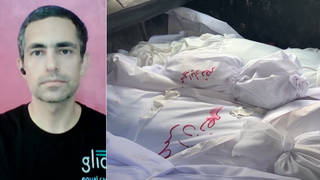

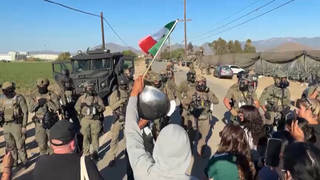

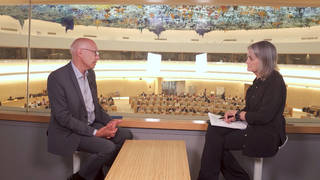
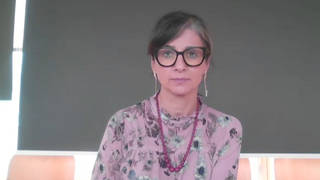

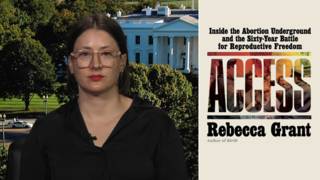

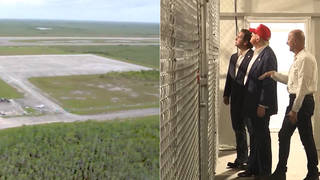

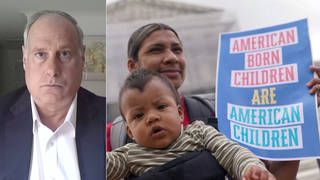
Media Options